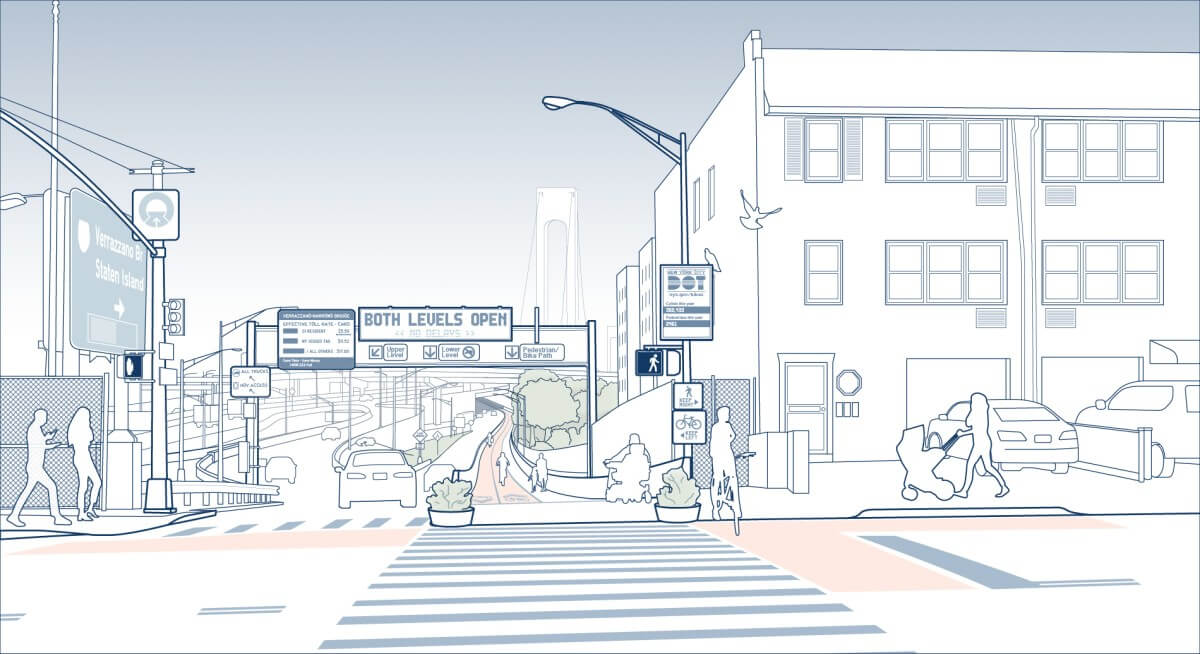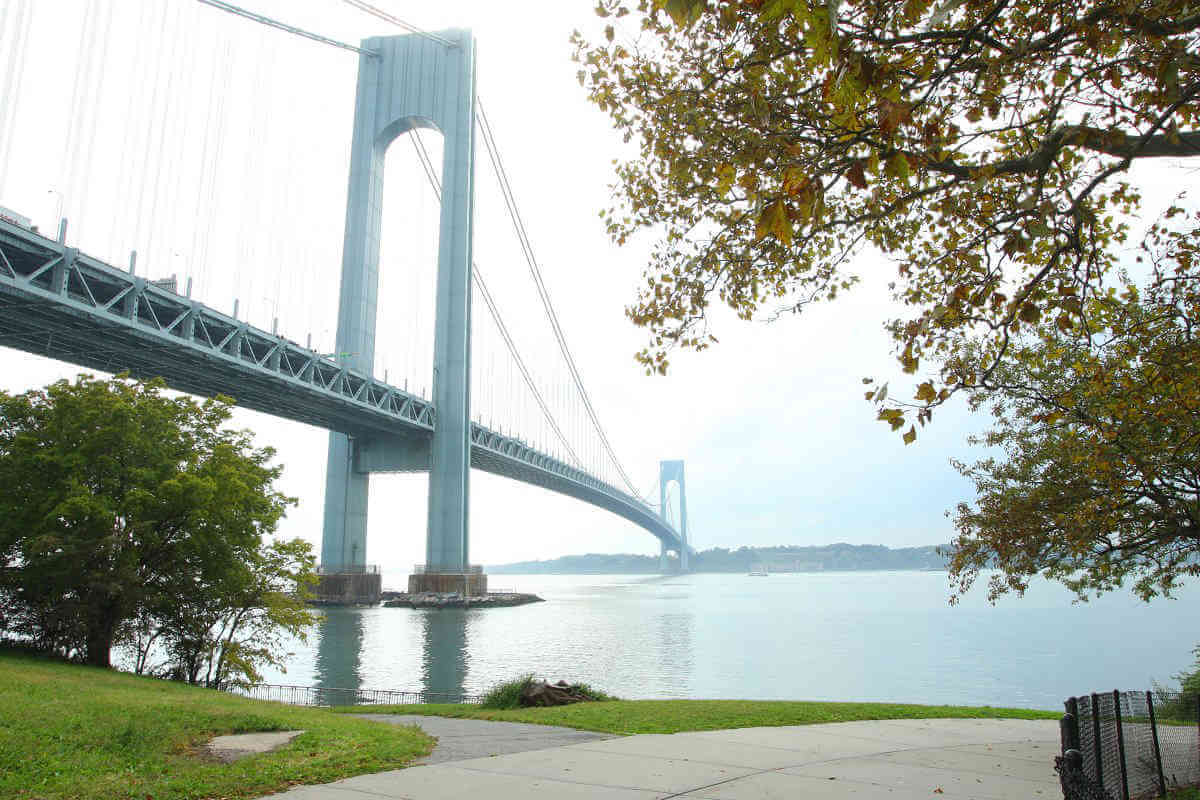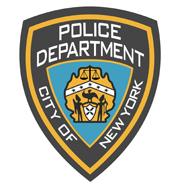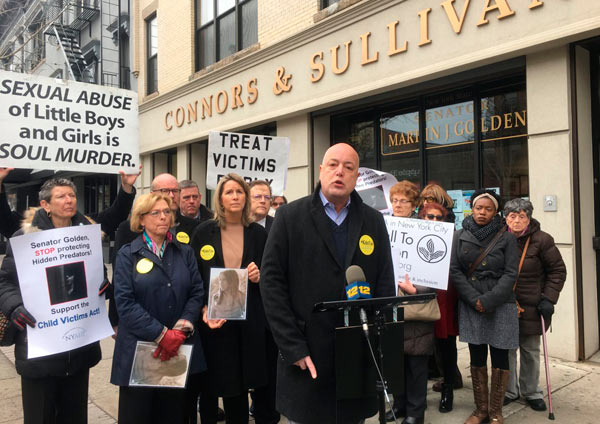As COVID-wary Brooklynites take up biking en masse to avoid crowded public transportation, a cadre of New York State legislators are looking to open the Verrazzano Bridge and other city spans to pedal-pushers — including by introducing legislation in Albany that would push the Metropolitan Transportation Authority to create cycling spaces on bridges overseen by the state agency.
“Despite the rapid growth of bicycling in New York City over the last decade, the MTA has done little to improve bicycle access at its stations and prohibits cycling on its bridges altogether,” said Bronx state Sen. Alessandra Biaggi in a Monday statement. “As more New Yorkers have turned to cycling and outdoor spaces throughout the pandemic, we must continue to make our communities welcoming to cyclists and pedestrians and encourage residents to use clean forms of transportation.”
The bill, which was simultaneously introduced in the state’s lower chamber by Queens Assemblymember Jessica González-Rojas, would create an advisory committee within the MTA tasked with drawing up a plan for better bike and pedestrian access on the agency’s bridges and public transportation stations.
The potential 13-member panel would be appointed by the governor and legislative leaders, and would also weigh in on the Authority’s capital projects and capital planning.
One southern Brooklyn bike advocate hailed the move as an important first step in getting transit honchos to the table, after years of MTA bigs resisting bike access on the agency’s overpasses.
“For Brooklynites looking to bike over the Verrazzano to Staten Island or the Marine Parkway Bridge to the Rockaways, MTA leadership has been more than indifferent — they’ve been aggressively hostile, using arbitrary and false safety claims to obscure their own failures and last-place status,” said Brian Hedden, a co-founder of the advocacy group Bike South Brooklyn. “This bill will be an important first step in catching the MTA up with its peers, and ending the leadership’s pointless obstruction.”
The organization has lobbied the MTA since 2019 to close one of the Verrazzano Bridge’s 13 car lanes and turn it into a cycling and pedestrian path.

In 2015, MTA officials proposed an almost $400 million bike path expansion that included new 20-foot lanes on either side of the bridge and elaborate ramps rising from the waterfront greenway up to the bridge.
However a recent Streetsblog report showed how the agency might have purposefully pitched the bloated project while ignoring cheaper proposals that use existing roadway and street-level approaches to get onto the bridge, effectively killing their own plans on arrival.
Bay Ridge residents renewed their push to repurpose outermost lower-deck lane on the Staten Island-bound side with an online petition in August as commuters and recreational bikers avoided MTA’s subways and buses for fear of spreading COVID-19.
The effort also came after a maverick cyclist was spotted riding on that very lane across the Ridge-to-Rock span earlier that month, which advocates said proved it could be done.
However, a spokesman for the agency at the time said it was too late to make changes since car traffic had already returned to pre-pandemic levels clogging the bridge too much to remove any lanes.
An MTA spokesman declined to provide further comment.
In the March 8 release for the new bill, pols and advocates noted that bridges controlled by the city’s Department of Transportation — such as the Brooklyn, Manhattan, and Williamsburg bridges — have been much more accommodating for cyclists and pedestrians.
A model advocates cited for the Verrazzano bike lane effort is the Pulaski Bridge between Greenpoint and Queens, where DOT turned a former vehicle lane into a two-way bike path in 2016.
More recently, Mayor Bill de Blasio committed to handing one car lane on the Brooklyn Bridge roadway over to bikes by the end of his tenure this year.
The Verrazzano has remained off limits to cyclists since its construction by power broker Robert Moses in the 1960s, except for rare occasions like the Five Borough Bike Tour.
Many of the Authority-controlled bridges connect boroughs outside of Manhattan to each other, and the current restrictions make cross-town trips a pain for cyclists, according to one advocate.
“The Verrazzano, Marine Parkway, Cross-Bay, Triboro, Whitestone, and Henry Hudson Bridges all have the untapped potential to be interboro greenway connectors,” said executive director of the Brooklyn Waterfront Greenway Initiative Terri Carta.
Some MTA spans, like the Marine Parkway-Gil Hodges Bridge between Floyd Bennett Field and the Rockaway Peninsula, have a pedestrian walkway and the rules ask cyclists to dismount while crossing — a regulation bikers routinely flout.
MTA offers a bike rack program on two of its Staten Island bus routes that cross the bridge, the S53 and S93, which since 2015 has allowed for two bikes to be stored at the front of each bus at a time.
























